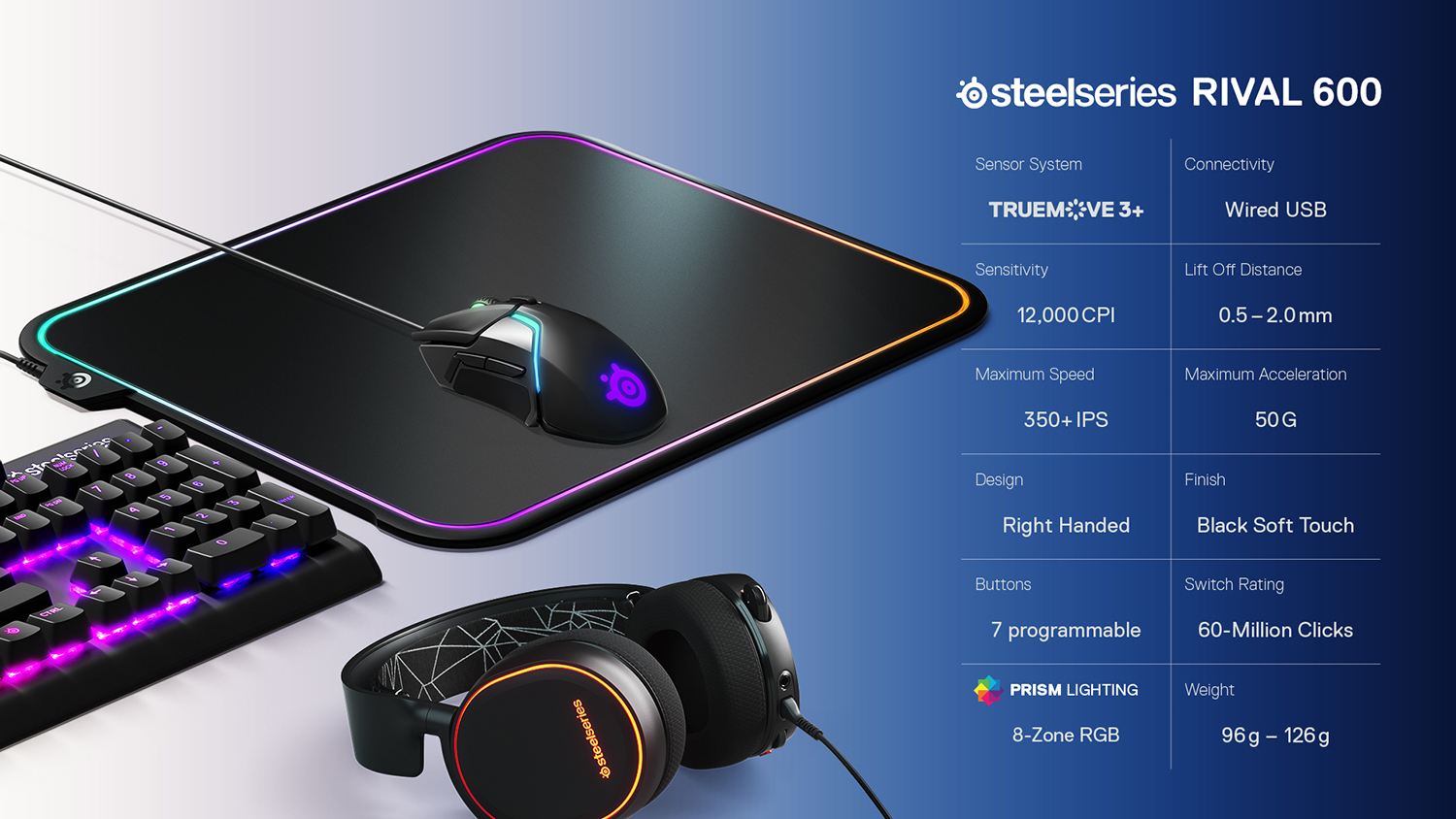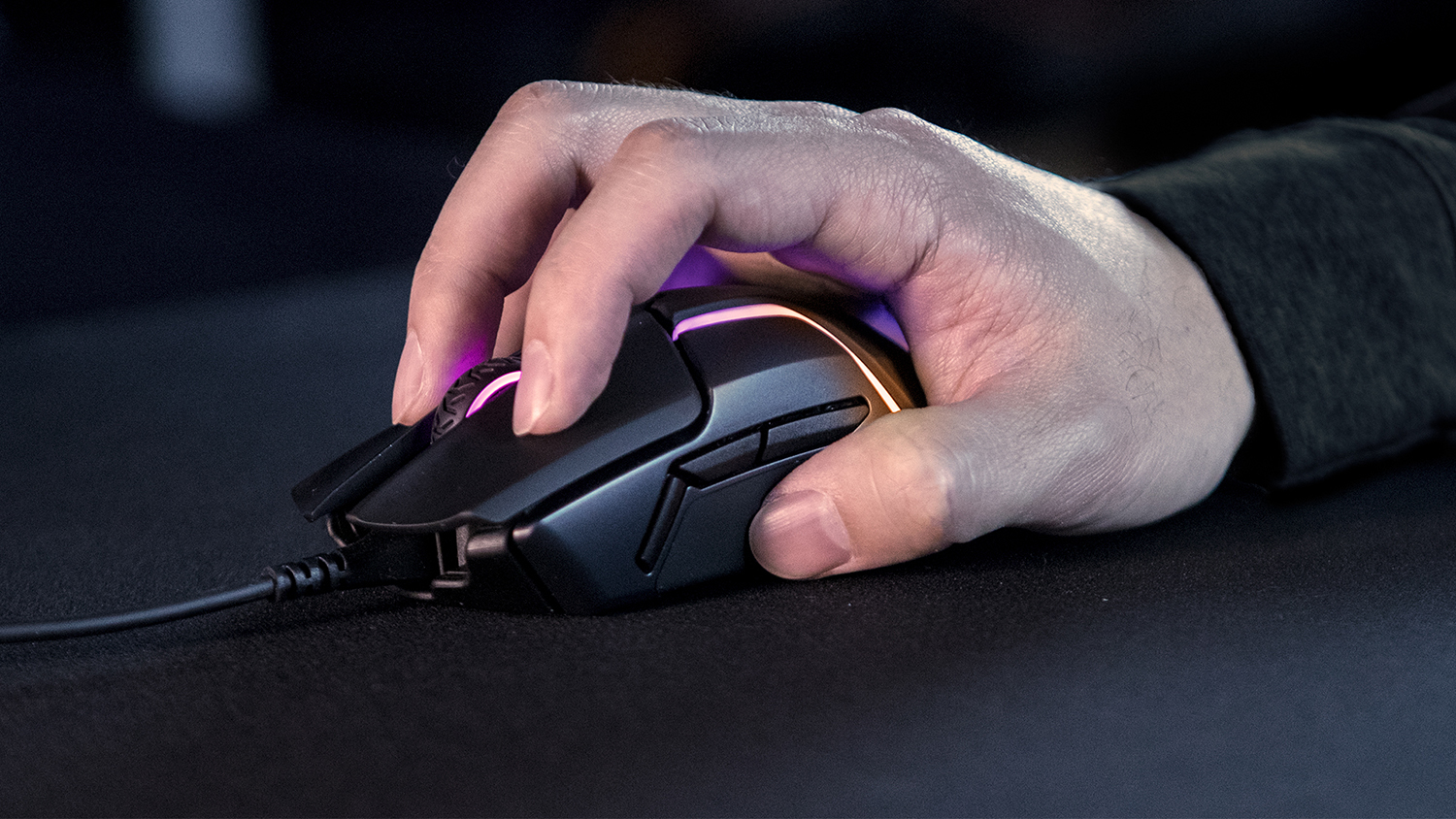Tom's Guide Verdict
If the SteelSeries Rival 600 isn't the very best all-purpose gaming mouse on the market, it's at least in the highest echelon.
Pros
- +
Beautiful design
- +
Accurate sensor
- +
Pretty illumination
- +
Tunable weights
Cons
- -
Weights are a little finicky
- -
A few software quirks
Why you can trust Tom's Guide
The SteelSeries Rival 600 ($80) takes the SteelSeries know-how and attempts to deliver even more-refined versions of the G502's best features. The Rival 600 looks beautiful, feels great, provides nearly unparalleled performance and offers some of the slickest customization options on the market.
Is it better than the mouse it's aiming to unseat? Arguably not. The software is a little less intuitive than it could be, and managing the weights is more of a pain than I was expecting. However, those are pretty much the most serious criticisms I can muster. If the Rival 600 isn't the very best gaming mouse on the market, it's at least in the highest echelon, and it maintains the exacting standards to which SteelSeries fans have grown accustomed.
Design
The first thing I noticed about the Rival 600 is that it's stylish. With two RGB LED strips snaking down the mouse's center, an illuminated SteelSeries logo on the palm rest, two grooved face buttons and a contoured scroll wheel, the Rival 600 is angular and attractive without going over the top. Better still, it has a detachable cable, which means you won't wear the cord out if you need to travel with it. (The cable isn't braided, but I'm in the "braided cables are nice, but not necessary" camp.)

Aside from the buttons mentioned above, there's also a dots-per-inch (DPI) sensitivity adjuster just beneath the scroll wheel, as well as three thumb buttons: two horizontal ones right where the thumb usually sits and one diagonal one in front of those two. I've admittedly never seen a button placement like this before, but it's not bad; it just takes a little getting used to. Personally, I didn't find this placement as intuitive as the central "sniper" style buttons on mice like the G502 or the Corsair M65, but you're also less likely to click the Rival 600's third button by accident, so take your pick.

The most innovative feature of the Rival 600 comes in its adjustable weights. Each side of the Rival 600 is magnetized, and you can detach them by simply flipping the mouse over and pulling gently. It's an ingenious system that keeps the side panels firmly in place during play sessions, and the seams on the topside are nearly invisible.
The weights are useful, but finagling them into place is a real pain.
On the other hand, the weights themselves are a mixed bag. There are eight steel, 4-gram weights, and you can slide them into eight slots, four on each side. You can keep the mouse light and fast, give it some heft, or even favor one side over the other.
The weights are useful, but finagling them into place is a real pain. For whatever reason, you'll either lock them in place on the first try or struggle fruitlessly as they fall out (and get lost in your rug) over and over again. If you need to adjust the weights only once, it's not a problem, but if you prefer different profiles for different games, it'll be a constant annoyance.
MORE: Best Gaming Mice 2018
Get instant access to breaking news, the hottest reviews, great deals and helpful tips.
Features
SteelSeries makes a big to-do about the fact that the Rival 600 will automatically calibrate its liftoff distance based on your play surface. This could be a boon to tournament players, and it does indeed keep your aim relatively straight and true even if you lift up your mouse a lot. However, in my testing, I didn't find that this feature had much effect one way or another on the average player (namely, me).

For the usual stuff — button programming and illumination — you can look to the SteelSeries Engine 3 software. This program presents a clean, navigable interface that lets you reprogram any of the mouse's buttons and make the peripheral light up in a variety of attractive patterns. You can also adjust the DPI, program macros, link profiles with games and so forth.
The Rival 600 is angular and attractive without going over the top.
The profile and button functionalities are very straightforward, although SteelSeries still allows only two DPI modes per profile. I'm of two minds about this. On the one hand, it keeps things simple, and most players don't need more than two DPI settings per game anyway. On the other hand, it means they'll definitely need to program profiles for multiple games rather than just having one jack-of-all-trades profile with, say, four or five different DPI settings. I don't have very strong feelings either way, but it's something to consider.

However, the lighting is not as straightforward as it could be. The Rival 600 features six different lighting zones, but the program selects only one of them by default. As such, you could be toying around with a lighting pattern for quite a while before realizing that it applies only to the scroll wheel. It's easy enough to copy patterns, but it still requires some trial and error that you won't encounter with comparable programs from Razer, Logitech or Corsair.
Making your own patterns can also be a fraught process. I made a very attractive dark-blue-purple-light-blue cycle to accompany my StarCraft sessions, but it kept snapping back to the start of the pattern rather than fading, until I made it loop manually. Again, this is a minor gripe, but it doesn't apply to some of the Rival 600's competitors.
MORE: The Best Gaming Mice $25 and Under on Amazon
Performance
The Rival 600 plays games exceptionally well, but this shouldn't surprise anyone who's picked up a SteelSeries mouse in the last three or four years. With an easy-to-grip design on the outside and a Pixart TrueMove 3 optical sensor on the inside, the Rival 600 allows for a wide range of movements and tracks actions in-game accurately.

I tested the device with Overwatch, StarCraft: Remastered, Telltale's Batman and SpellForce III to see how it performed across a variety of both single-player and multiplayer-focused games. Like most generalist gaming mice, it didn't have a standout genre, but rather performed consistently across the board. The peripheral was equally suited to building up a Terran military base, touring the halls of Arkham Asylum and throwing up a shield to protect my allies as D.Va.
With an easy-to-grip design on the outside and a Pixart TrueMove 3 optical sensor on the inside, the Rival 600 allows for a wide range of movements and tracks actions in-game accurately.
Given the mouse's design, SteelSeries is probably hoping that the Rival 600 will pick up some traction with the esports crowd. My tests indicate that it's good for both FPS and RTS titles, but whether it can perform at the highest levels is something that the pros and semipros will have to decide for themselves. Its sleek body and detachable cord, at the very least, make it a viable option.
Bottom Line
The SteelSeries Rival 600 is a gorgeous and functional mouse with a bevy of extra features that should appeal to both the esports crowd and everyday players who like to customize their gear. It doesn't break any new ground in peripheral design, but it's one of the best at what it does. To give it a backhanded (but sincere) compliment, it's easily the second-best generalist gaming mouse on the market right now.
If you already have other SteelSeries gear, you'll be able to sync the Rival 600 very easily with that equipment, so it's a smart investment. Otherwise, consider the G502 as well; the weights snap into place better, and the software is just a little bit easier to wrangle. I don't have a definitive recommendation between the two, so it's safe to say that you can't go wrong either way.
Credit: SteelSeries

Marshall Honorof was a senior editor for Tom's Guide, overseeing the site's coverage of gaming hardware and software. He comes from a science writing background, having studied paleomammalogy, biological anthropology, and the history of science and technology. After hours, you can find him practicing taekwondo or doing deep dives on classic sci-fi.
-
m619 Is the scroll wheel up/down programmable on this mouse ? The G502's scroll wheel isn't which is a deal breaker for meReply
